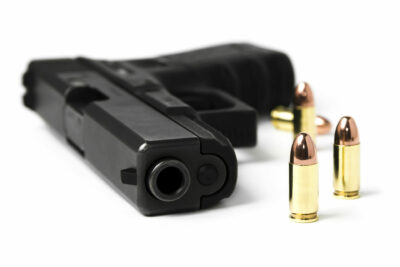9mm NATO Ammunition Specifications, History, and Applications
9mm NATO ammunition, also known as 9x19mm NATO, is a widely used pistol cartridge that has gained popularity among military, law enforcement, and civilian shooters across the globe. In this article, we will delve into the specifications, historical background, and various applications of 9mm NATO ammunition.
Specifications of 9mm NATO Ammunition
The specifications of 9mm NATO ammunition closely resemble those of the popular 9mm Parabellum (9x19mm) cartridge. However, there are certain noteworthy distinctions that set 9mm NATO apart. Let’s explore the key specifications:
Bullet Diameter: The bullet diameter for 9mm NATO ammunition measures 9.01mm (0.355 inches), which is consistent with the 9mm Parabellum.
Cartridge Length: The overall length of a typical 9mm NATO round is approximately 29.69mm (1.169 inches). This standardized length ensures compatibility with firearms chambered for 9mm NATO.
Pressure: One notable characteristic of 9mm NATO ammunition is the higher pressure it operates at compared to standard 9mm Parabellum rounds. It is loaded to a maximum average pressure of around 36,500 psi (251.7 MPa). This elevated pressure level is carefully calibrated to meet the requirements of military firearms.
Bullet Weight: 9mm NATO ammunition is available with various bullet weights, commonly ranging between 115 grains and 124 grains (7.5 to 8 grams). The selection of bullet weight depends on factors such as desired performance, penetration, and recoil management.
Velocity: Muzzle velocity, which denotes the speed of the bullet as it leaves the firearm’s barrel, can vary depending on the specific load of 9mm NATO ammunition. Generally, velocities range from 1,150 to 1,250 feet per second (350 to 380 meters per second). These velocities contribute to the cartridge’s effectiveness and energy transfer upon impact.
Historical Background of 9mm NATO Ammunition
The origins of 9mm NATO ammunition can be traced back to the early 20th century when renowned firearms designer Georg Luger introduced the 9mm Parabellum cartridge in 1902. The 9mm Parabellum gained widespread acceptance due to its exceptional performance, leading to its adoption by military and police forces worldwide.
As the 20th century progressed, NATO member countries sought to standardize ammunition to facilitate logistical efficiency and enhance interoperability among their armed forces. The 9mm Parabellum emerged as the ideal choice, thus earning the designation of 9mm NATO.
The adoption of 9mm NATO ammunition offered several advantages. It ensured a unified supply of ammunition, enabling NATO forces to share resources seamlessly. Moreover, standardized ammunition simplified training procedures and enhanced compatibility across different firearms.
Applications of 9mm NATO Ammunition
The versatility and reliability of 9mm NATO ammunition make it well-suited for various applications within the military, law enforcement, and civilian sectors. Let’s explore its key applications:
Military Use: 9mm NATO ammunition serves as the official pistol caliber for NATO forces. It is extensively utilized by military personnel for sidearms, submachine guns, and select-fire rifles. The cartridge’s manageable recoil, high capacity, and effectiveness in close-quarter engagements make it a preferred choice among armed forces.
Law Enforcement: Law enforcement agencies worldwide have widely adopted 9mm NATO ammunition due to its proven track record in real-world encounters. The cartridge’s balanced performance, moderate recoil, and availability
DKC produces 9mm NATO brass and projectiles at NATO certified facility. Please contact us to become a dealer of DKC Brass & Projectiles.




